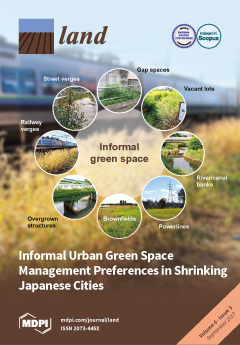Resources
Displaying 1976 - 1980 of 2258Using Historical Maps within a GIS to Analyze Two Centuries of Rural Landscape Changes in Southern Italy
The current characteristics of a rural landscape may be better understood if suitable information related to its past is available. The availability of a Geographical Information System (GIS) can enable the analysis of landscape features in relation to several aspects, e.g., the evolution and mutual inter-relation among different ecosystems, the impact and sustainability of human activities, the visual characteristics of a landscape, etc.
Scenarios of Vegetable Demand vs. Production in Brazil: The Links between Nutritional Security and Small Farming
Dietary guidelines urge Brazilians to increase their consumption of raw vegetables. Yet key issues must be tackled by the government and civil society, not only to foster consumers’ appetite for healthier food, but more importantly to diminish the gaps between local demand and production, determined by food and land accessibility. We examine whether vegetable production in Brazil meets the demand to provide Brazilians the daily amount of fresh food recommended by the World Health Organization (WHO).
The Influence of Geology on Landscape Typology in Jordan: Theoretical Understanding and Planning Implications
Landscape Character Assessment (LCA) has been introduced into Jordan through the MEDSCAPES project. The purpose of this project was to streamline landscape studies and integrate them into the land use planning practices in Jordan. Two areas within the Mediterranean and arid climatic zones of the country were chosen as test areas for the methodology. These were the Yarmouk River drainage basin in the northwest of the country and the Mujib River area in the west of Jordan within the Dead Sea basin.
Erratum: Viet Nguyen, L., Tateishi, R., Kondoh, A., Sharma, R.C., Thanh Nguyen, H., Trong To, T. and Ho Tong Minh, D. (2016). Mapping Tropical Forest Biomass by Combining ALOS-2, Landsat 8, and Field Plots Data. Land, 5(4), 31.
The authors would like to correct the following errors in Figure 1 in [1]: In the original publication data source is wrong in “Figure 1. [...]
Central Asian ‘Characteristics’ on China’s New Silk Road: The Role of Landscape and the Politics of Infrastructure
China’s $1 trillion One Belt, One Road (OBOR) infrastructure project has significant landscape, socio-economic, and political implications in recipient countries. To date, investigation has focused on Chinese motivation and plans rather than OBOR impact in host nations. This paper examines the programme from the perspective of two Central Asian states—Kazakhstan and Kyrgyzstan—that are at the heart of OBOR.


